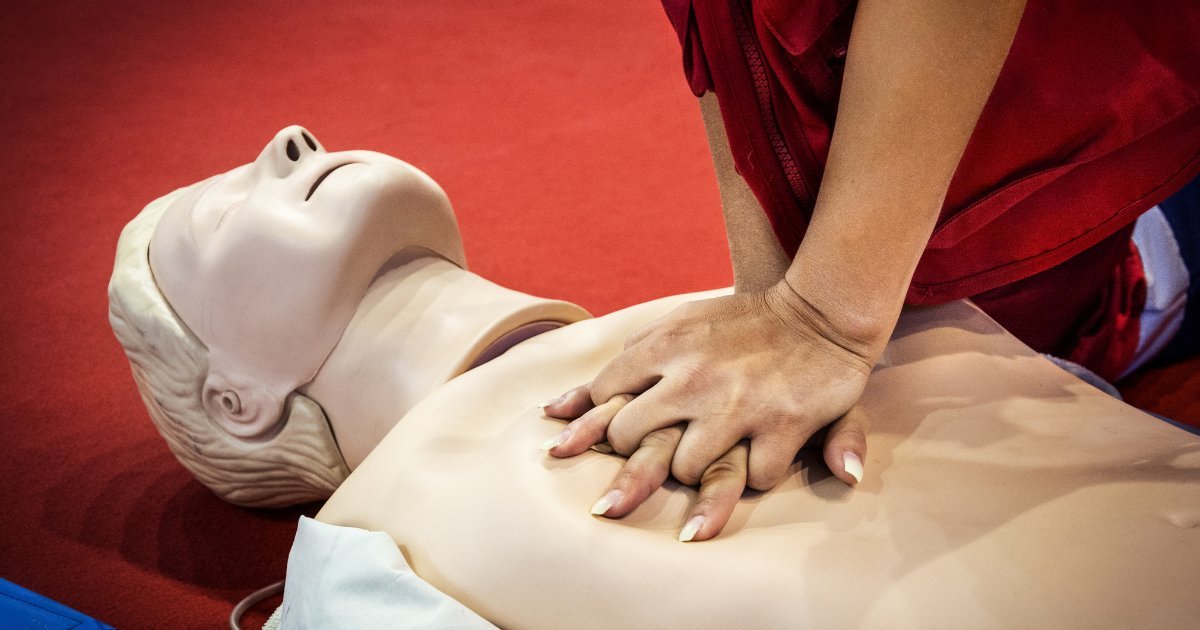Cardiopulmonary resuscitation (CPR) is an emergency maneuver that can save lives in cases of cardiac arrest. Knowing its basic steps allows you to act quickly while professional help arrives, increasing the chances of survival.
What is CPR and why is it vital?
CPR combines chest compressions with ventilations to keep blood and oxygen circulating to vital organs, especially the brain and heart.
According to the American Heart Association (AHA)Early CPR can double or even triple the chance of survival in cardiac arrest.
Key data: Out-of-hospital cardiac arrest has a survival rate of less than 10 % if CPR is not performed immediately.
When to start CPR
CPR is indicated when a person:
- Does not respond to stimuli.
- No breathing or agonal breathing (gasping).
- No palpable pulse (in settings with trained personnel).
Important: Before starting, confirm the safety of the scene and call for help by activating the emergency service (911 in Mexico).
Basic steps of CPR (adults)
- Check response and respiration: He gently shakes his shoulders and asks aloud if he's okay.
- Call emergency services: If there is another person, have them call 911 while you start CPR.
- Position the hands: Place the base of one hand on the center of the chest (over the sternum), the other hand on top and interlace the fingers.
- Perform compressions: Press hard and fast, at a rate of 100-120 per minute, with a depth of 5-6 cm.
- Rescue ventilations: After 30 compressions, perform 2 mouth-to-mouth resuscitations if you are trained. If not, continue with compressions only (hands-only CPR).
- Continue the cycle: Maintain the 30:2 sequence until help arrives or the person regains signs of life.
Use of AED (Automated External Defibrillator)
If an AED is available:
- Turn it on and follow the voice instructions.
- Place the patches according to the diagram.
- Make sure that no one touches the victim during the shock.
- Resume CPR immediately afterwards.
Practical advice: In public places in Puerto Vallarta such as shopping malls, hotels or gyms, look for the DEA symbol to act more effectively.
Common errors in CPR
- Interrupting compressions too frequently.
- Not pressing hard enough or too slowly.
- Placing the hands on an incorrect point on the chest.
- Do not allow the chest to fully expand between compressions.
CPR in different age groups
| Group | Depth | Rhythm | Ventilations |
|---|---|---|---|
| Adults | 5-6 cm | 100-120/min | 30:2 |
| Children | 1/3 of the thoracic diameter | 100-120/min | 30:2 (1 rescuer) or 15:2 (2 rescuers) |
| Infants | 1/3 of the thoracic diameter | 100-120/min | 30:2 (1 rescuer) or 15:2 (2 rescuers) |
Training and prevention
While learning CPR theoretically is helpful, nothing replaces supervised practice. Organizations such as the AHA and the Mexican Red Cross offer classroom courses in which maneuvers are practiced with mannequins.
In Puerto Vallarta, it is possible to find periodic trainings for hotel, gymnasium and tourist company personnel, which strengthens the community's response capacity.
Puerto Vallarta and the importance of CPR in tourism
Being an international tourist destination, Puerto Vallarta receives thousands of visitors who engage in aquatic, sports and recreational activities. This increases the probability of medical emergencies in public places, where a quick CPR can make the difference.
Schedule your cardiology evaluation in Puerto Vallarta to know your cardiovascular risk and receive personalized recommendations.
References:
- American Heart Association. CPR & First Aid Emergency Cardiovascular Care
- European Resuscitation Council Guidelines for Resuscitation 2021
- Mexican Official Standard NOM-034-SSA3-2013, Regulation of emergency health services.
Legal note: This content is educational and is not a substitute for professional medical consultation.
